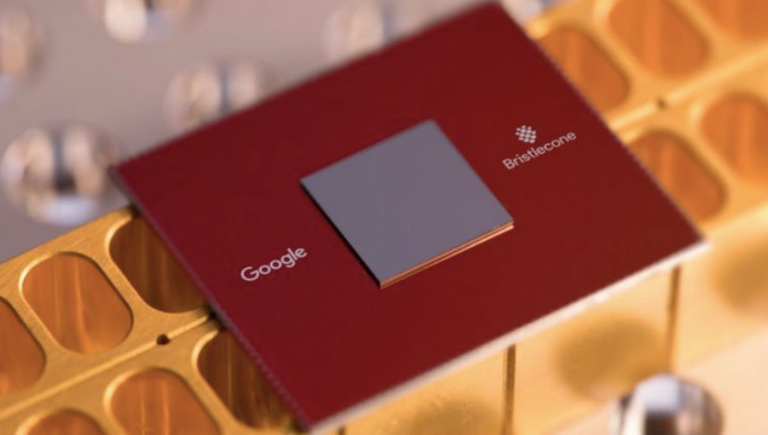Google introduces its Bristlecone quantum chip, 72 qubits, which could definitely surpass the power of traditional calculation in supercomputing, even.
By David12p • Mar 11 , 2018
, 2018
The quantum theory of matter has brought an important number of situations that challenge all logic. However, these amazing results are what are giving shape to quantum computing, which is being developed in parallel by Google, IBM and Intel, to mention the three most important. Google seems to be, has made extraordinary progress and for the first time exceeds the capabilities of supercomputers with their new quantum chips. Dubbed Bristlecone, Google has achieved a record of 72 quantum bits, that is, the so-called qubits.
Traditional computers, we know, do the calculations in a binary system, so that each bit of data is represented as zero or one, whether or not there is electricity. But in quantum mechanics, a qubit can be in a superposition of states, representing either zero or one at the same time. This means that the power of quantum computing can be scaled exponentially. For example, two qubits represent four states at the same time (00, 01, 10 and 11) and three qubits will be 8 states: (000, 001, 010, 011, 100, 101, 110, 111). That is, this grows as powers of 2.
As a result of this, quantum computers can do simultaneous operations, processing all the states at the same time while thus traditional computers have to go, value by value, one at a time. This means, at least in theory, that a 40-qubit computer (such as Tangle Lake, Intel), could be more powerful than a supercomputer in certain types of calculations.
The Google chip, Bristlecone, has 72 qubits, which are arranged in a square arrangement and obtain their quantum state through superconductivity, a process in which the transmission of electrons through cables with virtually no loss of energy by heat is say, without friction, which allows to represent multiple states driving currents in two directions at the same time. That is why quantum computers are not yet in people's homes, because simply the temperatures at which they work are very, very cold (by human standards).
Intel and the development of the quantum computer
The quantum system, however, has problems. The more qubits are put to work, the fluctuations can lead to errors in all calculations. And this is not easy to detect. In fact, this seems to happen when the wave function collapses, for example, with the Schoredinger Cat, which at some point is not dead or alive, until the cat's function collapses, causing the system to define the information you have.
Notwithstanding the drawback, in the quantum laboratories of Google, there is already an error correction technique (QEC - Quantum Error Correction), which has been demonstrated in a system with 9 qubits. The QEC works by verifying the combination of data and measuring the qubits, allowing the system to make an indirect measurement of information without affecting it. Recall that in quantum systems, the fact of observing something, modifies the observed. In a quantum system of 9 qubits, the method achieved errors as low as 1%, 0.1% for a qubit gate and 0.6% for two qubits gateways.
Google expects to achieve similar numbers in its Bristlecone processor, which has 72 qubits. To measure their performance, researchers have developed a measurement tool (benchmarking), which deliberately introduces an error in the system, compares it with a sample of output values and the distribution of them, resulting in the values that would be obtained in a classic computer.
If research continues to yield such good results, Bristlecone could possibly be the basis for creating large-scale quantum computers and systems.